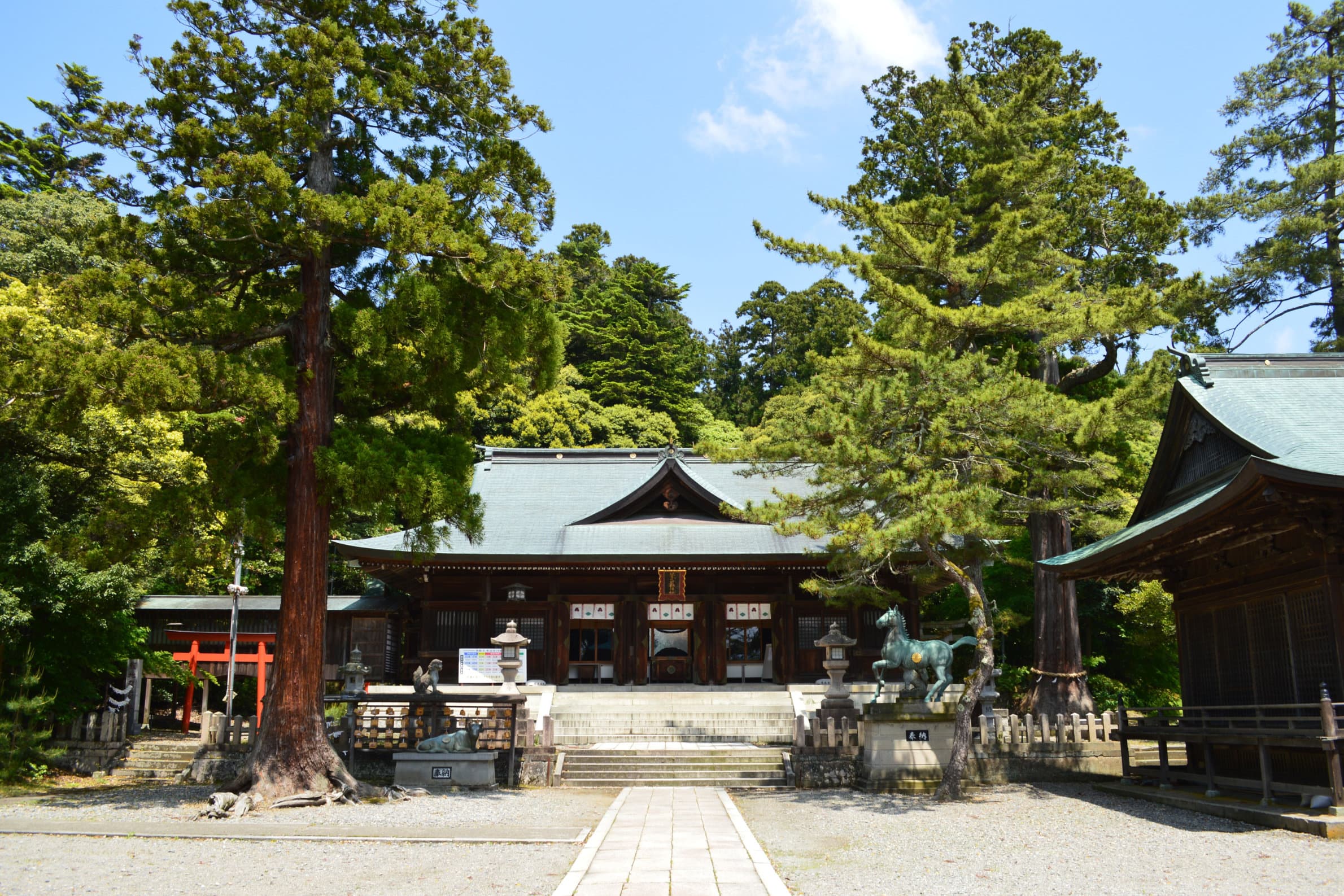
Sugou Isobe Shrine
菅生石部神社- Daishōji StationIR Ishikawa Railway LineHapi-Line Fukui Line
- Walk 21 minutes
Nestled in the city of Kaga, Sugou Isobe Shrine is one of the region’s most historically significant Shinto shrines. Known by several names over the centuries - including Sugōsha, Sugō Tenjin, and Shikichi Tenjin - the shrine stands as a rare testament to both imperial reverence and popular devotion spanning more than a millennium.
History
The shrine's origins date back to the year 585, during the first year of Emperor Yōmei's reign. According to historical tradition, a kami worshipped within the imperial palace was transferred to the present location at the behest of Emperor Bidatsu. This foundational event marked the beginning of the shrine's sacred role in the Hokuriku region.Emperor Yōmei's
Sugou Isobe Shrine is listed in the Engishiki, a Heian-period compilation of laws and customs, confirming its long-standing status as an Engishikinaisha - a government-recognised shrine of major importance. During the medieval era, it rose to prominence as the third-ranked shrine (san-no-miya) of Echizen Province, and later as the second-ranked shrine (ni-no-miya) of Kaga Province, with the famed Hakusan Hime Shrine serving as its ichinomiya (first shrine).
In the Meiji period, Sugou Isobe Shrine was officially elevated to the rank of Kokuhei Shōsha, a nationally recognised small-scale shrine under the State Shinto system.
In the medieval period, the area surrounding the shrine - known as Fukuda-no-shō - became a landholding of Kitano Tenmangū in Kyoto. This connection to the venerated scholar-deity Sugawara no Michizane (Tenjin) fueled the spread of Tenjin worship in the Hokuriku region. As a result, the shrine became commonly known as Sugō Tenjin and attracted widespread devotion from the people of Kaga and Echizen.
Among its most devoted patrons was the Saitō clan, considered the ancestral family of many bearing the Saitō name throughout Japan. They revered the shrine as their clan deity (ujigami) and, upon taking positions in Mino Province, enshrined its deity across 17 new Tenjin and Tenmangū shrines - laying the groundwork for the proliferation of Tenjin belief throughout central Japan.
Imperial and Military Patronage
The shrine also enjoyed the esteem of the Imperial Court. From the reign of Emperor Fushimi (1287–1298) to that of Emperor Ōgimachi (1557–1586), imperial offerings of garments and sacred treasures were regularly made during the Oriisai, the biannual seasonal festivals in spring and autumn. Documents recording these imperial visits and events remain preserved in the shrine's archives.
Sugou Isobe Shrine also received patronage from notable historical figures including Kiso Yoshinaka (Minamoto no Yoshinaka), Ashikaga Yoshimochi, Toyotomi Hideyoshi, and Maeda Toshiie. The powerful Maeda clan - lords of Kaga - frequently donated ritual items and treasures. Among these is a set of bridal furnishings used by Princess Tamahime, a granddaughter of Tokugawa Ieyasu, upon her marriage into the Maeda family. Several of these artifacts have been designated Important Cultural Properties of Japan.
Upcoming Events
Related topics
At Hey Japan!, we strive to keep the places listed on our website as current as possible. However, it is important to note that location owners or management may make changes to their plans, including canceling events, altering opening times, or modifying admission requirements, without prior notice. To ensure that you have the most accurate information, we recommend checking official websites before visiting any location.
Last Updated:














